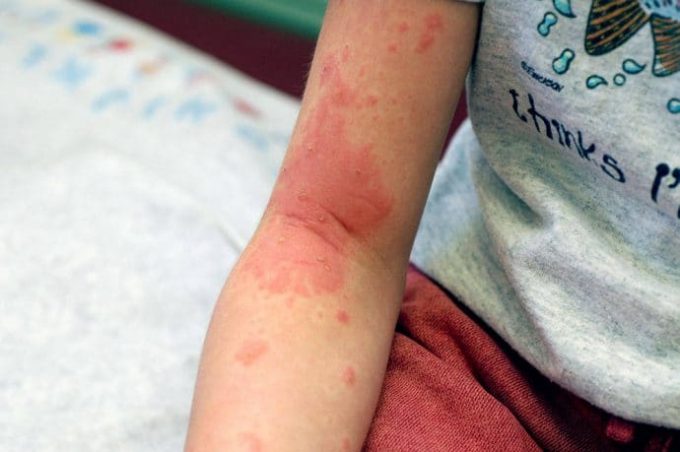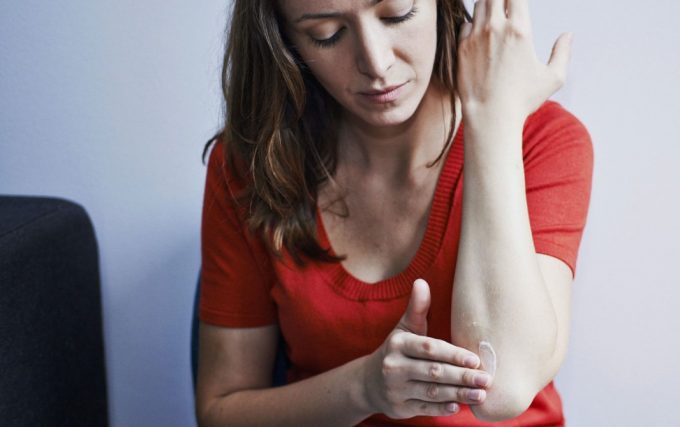How Long Until Poison Ivy Rash Appears: How to Recognize Symptoms and Treat Rash
The number of people heading over to the mountains grows significantly larger during the warmer months. Since poison ivy is more common than hikers would like it to be, you’re probably interested in getting a bit more info about how long until poison ivy rash appears or how to recognize symptoms and treat the rash.
There isn’t a better way to escape the blistering hot days in the city rather than head over for a mountain getaway, right? However, you should always be prepared for any inconveniences that could hit you during your trip – and the poison ivy is certainly one of them.
See also: Can You Eat Poison Ivy: Building a Better Immunity
However, don’t forget that even though the poison ivy rash is not the most pleasant thing in the world, it shouldn’t stop you from spending some time doing your favorite outdoor activities. Keep reading to learn more about it and minimize the chances of a rash ruining your trip!
What Is Poison Ivy?
Poison ivy is just one of the many toxic plants that can be found on most hiking and backpacking trails – in fact, you might even have it in your backyard! The rash you get from it is one of the most common skin problems associated with plants as it causes a very unpleasant and burning sensation many would rather skip.

As the name of the plant suggests, the ivy is “poisonous” because it contains an oil called urushiol – and most of the people are showing signs of an allergic reaction to this exact oil, thus the rash. It’s worth pointing out that different people can show different levels of an allergic reaction and in some cases, immediate medical help might be needed.
Getting in touch with the poison ivy oil doesn’t only happen if you touch the plant with your hands – actually, that’s one of the biggest misconceptions out there! Here’s a list of the different ways you can get in contact with the oil:
- Touching the plant with bare hands or having the plant touch any bare body part, such as uncovered arms, legs or neck;
- Touching clothing, shoes or any other camping and hiking gear that has been in contact with the plant or with you touching any equipment or clothing after coming in contact with the plant;
- Touching pets that might have been around poison ivy and still carry the oil on their fur;
- Burning the poison ivy plant – the oil is carried in the smoke and inhaling it could cause an extremely severe allergic reaction!
Leaves Of Three, Let It Be!
Even though it’s fairly common, most people have trouble identifying the poison ivy plant, so it’s good to go over its basic traits once again. However, remember that the look of the plant may change depending on the season or the location you’re hiking at.

On top of that, the plant is extremely adaptable, which could sometimes make recognition even more difficult. Here are some basic guidelines to help you out staying away from trouble:
- Leaves grow in groups of three – one stem has three leaflets grouped closely together on its end;
- The edges of the leaves are jagged but not saw-toothed;
- Leaves are green in the summer and red in the fall;
- It can grow low on the ground, as a shrub or as a climbing vine. You can distinguish the poison ivy vine by its hairy-looking aerial roots;
- It may produce white-looking flowers or berries;
A key thing to remember at all times during your trip is the old saying – “Leaves of three, let it be!” which may come in handy more often than you think!
What Are The Symptoms?
No matter how many precautions you take during your trip, if you’re a frequent mountain visitor, chances are, you’ll have to deal with poison ivy rash at some point.

Read on to learn the poison ivy symptoms so you’ll be able to react faster in a case of a rash developing on your skin.
- Skin redness, which is one of the most obvious signs, on the areas where your body has come in touch with the plant or the oil;
- Burning and itching sensation in the same area;
- Orange blisters that ooze liquid or
- Smaller bumps or larger hives may appear, depending on the severity of the reaction;
- Painful sensation whenever you touch the affected area;
In the more severe cases, the following symptoms may appear alongside the basic symptoms listed above. In a case like that, immediate medical care is required.
- Trouble breathing that may or may not be accompanied with a choking sensation;
- Swelling of the face, mouth, throat or genitals;
- Swelling of the eyelids to the point where eyes swell shut;
- Rash spreading all over the body;
- Blisters spreading all over the body and oozing a lot of fluid;

Symptoms of the rash can appear anywhere from a few hours from the contact with the skin all the way to several days or weeks. That largely depends on the amount of oil absorbed into the skin, the sensitivity of the person exposed to it as well as whether or not the person has immediately taken steps to remove the oil from the skin.
Remember that in most of the cases, the faster you recognize the symptoms and the faster you take action, the symptoms could potentially be minimized and the rash might be prevented from spreading.
Rash Treatment
There are several things you can do to deal with the rash.
Be Fast!
In this case, time is everything – the faster you start treating the affected area, the better! Some hikers may not notice they’ve come into contact with poison ivy until days later which could lead to a more severe rash developing.

50% of the urushiol can be absorbed in the first 10 minutes, so don’t leave things for later or until you get back home! Treating the affected area earlier could drastically alter the severity of the rash.
Wash Away!
Your main goal is to try and remove as much of the oil as possible and stop it from penetrating the skin. There are a few ways to do that. One way is to wash the area with loads of water. Pour generous amounts of water on top of it and rinse thoroughly, even for a few minutes if you have enough water to do so.
Don’t rub the place vigorously as you might inflame the rash furthermore. If you’re in nature and have no other option, use a creek or a river flowing nearby – washing it in a water of some kind is always a better idea than not washing it at all! Apart from that, you could also use some soap to wash the affected area.

However, if using a bar of soap, make sure to use it only on the area with the rash – you could spread it all over the body if not! After you’re done washing, thoroughly rinse the soap (or don’t use it at all after you’re done with the rash!), as the oil can stick to it and cause a reaction weeks afterward!
Pay Attention To The Water Temperature
An important thing to keep in mind is the warmth of the water. Even though you could be tempted to seek relief in washing with either hot or cold water, lukewarm water is the only way to go!
That’s because hot water will make your pores open up and the oil could go deeper into the skin. On the other hand, cold water makes the pores close, so the oil could get trapped inside. Always opt for water that’s the closest to your body temperature for the first rinse and leave the soothing, cold compresses for later.
Wash Clothing And Gear
The next thing you’ll have to do is remove and wash all of the clothing, camping gear or anything else that might have come into contact with the plant. You could even wipe everything with some rubbing alcohol. It’d be for the best to change into another set of clean clothes and pack the infected clothes into a bag you’ll handle at home with gloves.

After you’re done washing all of the clothing and gear, take some time to wash your hands thoroughly – use a soft brush and don’t forget the part under and around your nails, as some oil could get stuck in there.
If you can’t be sure whether or not something has been, always stay on the safe side and wash it anyway, as the oil can cause reactions for months and even years after!
Apply Cold Compresses
After you’ve taken all of the steps listed above, you can start with the cool compresses on the troubled area. Take a clean towel and wet it with some ice-cold water.

Apply it to the rash for about 15-20 minutes and then take it off, allowing the place to air dry. Keep alternating between those two steps for a while until you start feeling (a small but welcoming!) relief.
Don’t Scratch!
Most of the time, you’ll feel the need to vigorously scratch the area – it’s not called a rash without a reason, right? However, it’s for the best to restrain from any scratching.
This isn’t because the ooze from the blisters can spread the rash further on but because you could easily cause an infection – humans have a lot of dirt and bacteria under the nails. Instead, try and apply some calamine lotion to the area; it’ll offer you some temporary relief, together with the cold compresses.
Don’t Do Anything Without Medical Supervision
Taking any medicine or applying any topical cream to treat the poison ivy rash could sometimes lead to quite the opposite thing happening – with your condition worsening!

Even though it’s a widespread belief to take antihistamines or apply some topical antihistamine cream to the spot – and thus prevent the allergic reaction – you shouldn’t do so without your doctor approving it first. This is because you could cause a completely different allergic reaction happening to your body!
If you know your body develops a severe allergic reaction to poison ivy, carry whatever pills, cream or shot your doctor has approved for you at all times during your trip.
See A Doctor
Most of the time, the rash should completely disappear on its own in about 10-14 days. However, in some more severe cases, it could last even longer – all the way up to 6-8 weeks.

But, a trip to the hospital is a must in the following cases:
- If your rash doesn’t feel better after a week;
- If you start developing a fever higher than 100F;
- If your blisters start oozing pus;
- If you have troubles breathing;
- If your rash covers a larger percentage of your body;
Prevention
There are several things you can do to minimize the chances of getting a rash.
Wear Long-Sleeved Clothing And Closed Shoes
Since poison ivy may grow in different forms according to location and season, skipping the shorts only may not always do the trick. There have been more than a few cases when the vine poison ivy has caused an inflammation by touching someone’s neck!

If you know there are chances of you running into anything that could give you a rash for weeks, cover your arms, legs and every other body part where your skin might get in contact with the leaves of the plant.
On top of that, if you’re going to be hiking in areas where you know for sure there’s poison ivy, always wear covered shoes, preferably some that go high around the ankle. Don’t forget to wear socks even if you wear long pants and covered shoes – your skin could still get in contact with the plant!
Even though wearing something long-sleeved is probably the last thing on your mind during warmer times, try and look for some specially designed hiking materials that are extremely breathable.
Know The Poisonous Plants In Your Area
If your area has been known for poison ivy – or any other poisonous plants for that matter – get the time to know each of them and the rash they could give you. Try and find out where they grow the most, some of their distinctive traits, and learn what you should do in case of contact.

It could take you a couple of tries to learn how to distinguish between some of the plants but once you learn what a poison ivy looks like, it’ll become easier for you to avoid it!
Avoid Walking On Overgrown Parts Of The Trail
If you’re walking on a new trail, you can never know for sure which parts may or may not have some plants ready to give you a vigorous rash. However, you can always stay on the safe side and avoid walking over parts that are overgrown with grass, shrubs or any other plant.
Most of the cases, you won’t even be aware you’ve stepped on some poison ivy until it’s too late. Apart from that, following the main trail could be a good idea – most of the time, those are well-maintained and cleared
Wash Everything Once You Get Back
Even if you come back completely safe and sound from your trip – with no rash whatsoever – wash all of your clothes and equipment. Don’t forget to clean even things like your tent, sleeping bag or backpack. This step is necessary because the oil can stick to random objects and cause a rash even years afterward.

You wouldn’t want to sleep in a sleeping bag that somehow got in contact with the plant, right? As an extra measure of precaution or if you’ve been hiking in an area known for its poison ivy, you could also wipe all of the equipment with some rubbing alcohol.
Pay Attention To Your Four-Legged Best Friend
If you’re taking your dog hiking with you, you’ll need to give it a good bath once you get back – the oil from the poison ivy could easily stick to the hairs of the fur.
The poison ivy is not dangerous for animals, but your fur best friend could give you the exact same rash you’ve been hoping to avoid if it comes in touch with your skin or clothes.

Apart from that, be careful where your dog walks during the hike. In some cases, and especially in areas full of poison ivy, it could be for the best not to let your dog share the tent with you as they might bring in some of the oil.
Wrapping It Up
Hopefully, by now you’ve learned a thing or two about poison ivy and the way it could affect you. Getting the rash is definitely not the best memory from your hiking trip but it shouldn’t stop you from enjoying nature in its full glory in the slightest!
Even if you somehow end up getting the rash, it’s crucial to stay calm at all times – simply follow instructions and consult with your doctor if you notice any severe reactions going on. For more tips and tricks on how to get rid of poison ivy, check out our article on this topic.






